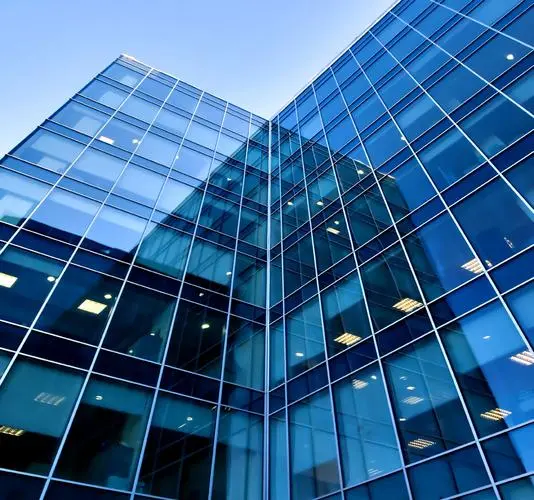Looking for a durable, weatherproof facade solution for your building? Modern curtain walls must meet five essential requirements: structural integrity, weather resistance, thermal performance, fire safety, and aesthetic appeal. These systems represent 15-25% of total building costs but deliver long-term value through energy savings and reduced maintenance.
Curtain walls must safely transfer loads (wind, seismic, self-weight) while preventing water/air infiltration and maintaining thermal comfort. Fire-rated barriers and smoke seals are mandatory in multi-story applications. Modern systems also accommodate building movement (2-3% of height) and support cladding materials weighing up to 50 psf.

Let's examine each requirement in detail to understand proper curtain wall performance.
1. How does structural performance impact curtain walls?
The primary structural requirement involves safely transferring all imposed loads to the building frame without excessive deflection (typically limited to L/175 or 20mm maximum).
Structural Load Considerations
| Load Type | Design Requirement | Typical Values |
|---|---|---|
| Dead Load | Support self-weight | 15-50 psf |
| Wind Load | Resist positive/negative pressure | 20-120 psf |
| Seismic Load | Accommodate movement | Drift limits 1.5-2.5% |
| Live Load | Maintenance access | 25 psf minimum |
| Snow Load | Upper sections only | 7-50 psf |
Key structural components:
- Mullions: Vertical members (3-12" depth)
- Transoms: Horizontal members (2-8" depth)
- Anchors: Allow 3/4" thermal movement
- Spandrels: Conceal floor edges
Common framing materials:
- Aluminum: 6063-T5/T6 alloy (most common)
- Steel: For high-load applications
- Composites: Hybrid systems emerging
2. What makes weather resistance critical?
High-performance curtain walls must achieve ASTM E331 water penetration resistance at minimum 15% of design wind pressure (typically 6-12 psf test pressure).
Weatherproofing Requirements
| Feature | Performance Standard | Details |
|---|---|---|
| Water Penetration | ASTM E331 | No leakage at test pressure |
| Air Infiltration | ASTM E283 | ≤0.06 cfm/sq ft @ 1.57 psf |
| Drainage | 2-stage system | 100% redundancy |
| Gaskets | EPDM or silicone | 20+ year lifespan |
| Sealants | ASTM C920 | 25% movement capability |
Critical water management details:
- Pressure equalized design: PE cavities every 4-6 feet
- Wet sealing: Continuous silicone joints
- Dry gasketing: Compressed EPDM profiles
- Weeep holes: Minimum 3/16" diameter
- Flashing: Integrated with waterproofing
3. How does thermal performance affect design?
Modern energy codes mandate U-factors ≤ 0.48 Btu/(hr·ft²·°F) for curtain walls, requiring advanced thermal breaks and insulated glazing.
Thermal Improvement Strategies
| Method | Performance Impact | Cost Premium |
|---|---|---|
| Thermal breaks | Reduce U-factor by 55% | +15-25% |
| Triple glazing | U=0.22-0.28 | +40-60% |
| Low-E coatings | Reflect infrared | +$3-5/sq ft |
| Argon fills | Reduce conduction | +$2-4/sq ft |
| Frit patterns | Control solar gain | +$5-15/sq ft |
Thermal bridging solutions:
- Polyamide strips: 1/2" minimum
- Structural silicone: Eliminates metal contact
- Warm-edge spacers: Stainless steel hybrid
- Pressure plates: Thermally broken
4. What fire safety features are mandatory?
IBC requires fire-rated spandrel panels (1-hour minimum) between floors and firestopping that maintains rating during 1/4" movement cycles.
Fire Protection Elements
| Component | Code Requirement | Solution |
|---|---|---|
| Spandrel | IBC 705.8 | Mineral wool insulation |
| Perimeter | IBC 715.4 | Ceramic fiber blanket |
| Mullions | IBC 715.3 | Intumescent wraps |
| Smoke | IBC 716.5 | Silicone seals |
| Draft | IBC 716.6 | Vermiculite mortar |
Fire test procedures:
- ASTM E119: Fire endurance (temp ratings)
- NFPA 285: Exterior wall assembly
- UL 1479: Through-penetration
- ASTM E1966: Cyclic movement
5. How do aesthetic requirements influence design?
Architectural visions demand curtain walls accommodating various cladding materials, custom colors (40+ Kynar options), and precision tolerances (±1/8" alignment).
Finish Options Comparison
| Finish Type | Durability | Color Retention | Cost |
|---|---|---|---|
| Anodized | 20+ years | Excellent | $$ |
| PVDF | 15-25 years | Best | $$$ |
| Powder Coat | 10-15 years | Good | $ |
| Laminate | 5-10 years | Fair | $$ |
| Ceramic | 25+ years | Excellent | $$$$ |
Design flexibility features:
- Unitized systems: Pre-assembled modules
- Shadow boxes: Depth illusions
- Custom caps: Architectural branding
- Integrated sunshades: 30° adjustability
- Dynamic facades: Responsive elements
Effective curtain walls must meet structural, weatherproofing, thermal, fire, and aesthetic requirements concurrently. Modern systems achieve this through engineered aluminum framing (75% market share), advanced gaskets/sealants, and strict quality control (±1/16" tolerances). Performance verification via mockup testing (+$15,000-$50,000 per project) ensures compliance before full production.


